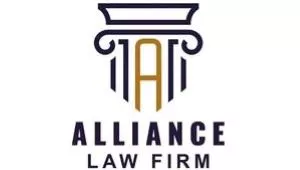Introduction
The dire need to ensure fair access, efficient and effective distribution of electricity is quite paramount in the electricity sector. In order to achieve this stride, the Nigerian electricity Regulatory Commission (NERC) released the Eligible Customer's (EC) Regulations 2024, pursuant to Sections 11, 12, and 13 the Electricity Act 2023 (the Act), to establish criteria for customer eligibility, stating the categories of persons who can access certain types of services and the conditions under which such services can be accessed. Understanding these criteria is essential for both consumers and service providers for effective navigation of the landscape of established electricity provisions. The criteria for customer eligibility are outlined by NERC, these criteria serve several purposes, including ensuring the reliability and stability of the electricity grid, promoting competition and safeguarding consumer rights. This paper shall examine the intricacies involved in acquiring the status of an eligible customer as well as the rights and obligations of the EC and suppliers and other parties to the transaction.
Customer Eligibility
NERC through its guidelines have set different criteria for who constitutes an eligible customer. The regulations classify eligible customers into different classes or categories based on various factors such as consumption levels, connection types, and agreements with electricity providers.
The NERC classified eligible customers into five classes.in the following manner:1
- Point to Point Connection: This category
typically applies to end-users with a significant level of
consumption, usually not less than 6MWh/h over a 90-day period.
These customers are directly connected, or will be connected, to a
generation facility via a metered 33kV delivery point. Agreements
with both generation and distribution licensees are necessary for
energy procurement and delivery.
- New Connection to 33kV Network: These are
unconnected end-users planning to consume at least 10MWh/h over 90
days. They must be connected to a metered 33kV delivery point on
the distribution network and have agreements in place for energy
delivery.
- Existing DisCo's Customer Transitioning to
Eligibility: These are customers are already connected to
the distribution network but seeking eligibility, they typically
have consumption levels similar to those in the second class. They
must meet the same consumption criteria and have appropriate
agreements with distribution licensees.
- Existing Customer Connected to Transmission
Network: This category includes customers with substantial
consumption levels, often not less than 20MWh/h over 90 days. They
are directly connected to a metered 132kV or 330kV delivery point
on the transmission network and have agreements in place for energy
delivery.
- New Connection to Transmission Network: This applies to unconnected end-users with planned consumption levels of at least 20MWh/h over 90 days. They must be connected to a metered 132kV or 330kV delivery point on the transmission network and have relevant agreements in place.
Procedure for the Grant of an Eligible Customer Status
The regulations also outline the procedure for a grant of eligible customer status. The process involves several stages, each requiring specific documentation and adherence to regulatory conditions.2 The regulation outlines three stages for the approval of eligibility status. The first stage is the review of eligibility stage, an applicant in this stage is required to file some documents which including a license or permit application form, load profile of the applicant, connection point or voltage level and any document the Commission may deem fit.3
The second stage is the approval of eligibility status, the applicant is also required to submit the following agreements with the Commission: an initialled Power Purchase Agreement (PPA); an initialled Transmission Use of System (TUoS) agreement; a Distribution Use of System (DUoS) Agreement; an initialled Supplier of Last Resort Agreement; an executed Competition Transition Charge (CTC) agreement between the DisCo and the EC, and initialled bilateral agreement (Project Execution Agreement); and a letter of clearance of non-indebtedness or a Settlement Agreement for unpaid bills from a DisCo.4
The third stage is the Issuance of Eligibility Status: Upon the approval of the status of an Eligible Customer, the EC must then file the following documents, evidence of payment of applicable regulatory fees, executed Market Participation Agreement (MPA) and executed copies of documents the Commission may deem fit.5 These steps ensure that the process of obtaining an EC status is transparent, regulated, and systematic, thereby maintaining the integrity and efficiency of the energy sector.
Further documentary requirements for the pre-approval, approval and post-approval documentation for EC and suppliers are contained in the Schedule to the Regulations.
Rights and Obligations of an Eligible Customer
The Regulations also outline the rights and obligations of both eligible customers. ECs are entitled to connect to transmission and/or distribution networks to receive contracted energy and capacity. This access is conditional upon the execution of the TUoS and/or a DUoS agreements and must not compromise existing obligations.6 The EC also have the right to select their supplier and negotiate the terms of supply, including pricing, quantity, and delivery schedule, in accordance with the Grid Code, Market Rules, and general electricity delivery conditions.7 Some of the obligations of the Eligible Customer is also spelled out in the regulations, to exercise their rights, eligible customers must fulfil the following obligations: The EC must enter into a "take or pay" contract for supply with a licensed generation or trading company; The EC shall install and maintain metering infrastructure with remote reading capabilities as specified in the regulations; The EC must meet all compliance and financial responsibilities. Finally, they must notify the Commission of any changes in corporate identity, address, or service location.8
Rights and Obligations of Supplier
The regulations additionally confer the rights of suppliers as defined within the PPA, TUoS, DUoS, MPA, and the terms and conditions of their license.9 These include, regular submission of all required data to transmission or distribution licensees as per the contract provisions on network usage and supply; Ensuring the availability of uncontracted capacity before entering into an agreement with the eligible customer; Executing and providing the "Supplier of Last Resort Agreement" with an alternative supplier to support the eligible customer's application.10 These rights and obligations create a structured framework that ensures both eligible customers and suppliers operate within a regulated, fair, and efficient market. This framework not only promotes transparency but also enhances the reliability and stability of the energy supply chain.
Eligible Customer Switching Rules
Switching electricity suppliers is a significant decision for Eligible Customers, and it is governed by specific rules and procedures to ensure a smooth transition. By Section 21, an Eligible Customer intending to switch suppliers must adhere to the Stage 2 application process as detailed in S. 11 of the regulations. This involves filing an application for the Commission's approval of all PPAs with prospective suppliers before service commencement. This step ensures regulatory oversight and compliance with established standards.
When an Eligible Customer decides to switch to a distribution licensee, the following rules apply, a minimum notice period of three (3) months must be provided to the distribution licensee, allowing sufficient time for planning. This requirement can be waived if both parties agree. The tariff for the Eligible Customer will be the prevailing rate for customers within the same tariff class. However, this rate can be negotiated bilaterally between the customer and the distribution licensee. While the standard tariff is applicable, a distribution company (DisCo) may offer a lower negotiated tariff. If such a concession results in reduced revenue before a rate redesign, the DisCo must absorb the financial impact.11
The process for switching suppliers involves three steps, first the Eligible Customer must notify their current supplier in writing about the intention to switch, specifying an agreed date. This is contingent on the termination clause in the existing PPA and the Commission's approval of the new supply contract. Secondly, the switching process begins with executing a PPA with the new supplier and other relevant industry agreements as outlined in Chapter 2 of the regulations. This must occur before terminating the existing PPA. Finally, the effective date of switching will be specified in the new PPA, along with any condition's precedent for the commencement of supply. The new supplier must submit the executed PPA to the Commission for approval. Additionally, a notification of the executed PPA must be sent to the System Operator, Market Operator, and the supplier of last resort, in line with the general conditions for electricity delivery and supply, Technical Codes, and Market Rules. Before the new contract becomes effective, the Market Operator is responsible for conducting a final meter reading of the customer's energy consumption. This ensures a clear settlement between the old supplier and the Eligible Customer, facilitating an orderly transition.12
Pricing
Under S. 25, the pricing for power delivery from a supplier to an Eligible Customer involves several components beyond the basic capacity and energy charges negotiated in the PPA. These additional charges, as approved by the Commission, align with the operative tariff methodology and include, transmission use of system charges, distribution use of system charges, additional surcharge, regulatory fees, ancillary service charges, market administration and system operation charges. These charges ensure that the pricing structure is comprehensive and reflects the true cost of delivering electricity to the customer. The Commission may determine the rate to be contributed to the Power Consumer Assistance Fund and the Rural Electrification Fund pursuant to sections 123 and 145 of the Act.13
Market Power Abuse
Section 28 of the regulations addresses the critical issue of market power abuse. The Act mandates the Commission to ensure fair competition and prevent any misuse of market dominance. Specifically, for customers connected to a DisCo network and switching to a generation or trading licensee, the applicable tariff must not be lower than the weighted average wholesale cost of grid power at the time of the transaction. This provision ensures that tariffs remain fair and reflective of actual market costs, preventing unfair competitive practices and ensuring a level playing field.
Competition Transition Charge (CTC)
Distribution licensees are entitled to collect a CTC which is an additional revenue outside of its normal tariff. It is collected to compensate for loss of revenue or inability to earn permitted rates of return on its assets, which arises where a customer is lost to an EC transaction. Switching supply from distribution licensee to an eligible transaction may lead to stranded costs and revenue loss as a result of the following: Unamortised Investments in Network; Long Term contractual commitments such as PPA and Vesting Contracts (VC); Legacy Cost; Cross subsidy to other customer class currently provided by the potential EC; Overhead transition costs and Regulatory Asser and Revenue Shortfall. The Commission may direct that CTC be recovered from the EC. The CTC will be determined by the Commission and all applications for CTC must follow the laid down procedure contained in the Regulation.14
Supplier of Last Resort
In the dynamic and sometimes unpredictable energy market, the concept of a “Supplier of Last Resort” (SoLR) plays a critical role in ensuring continuity of supply to Eligible Customers when their primary supplier fails to deliver. A supplier of last resort is a backup supplier that steps in to provide electricity to an Eligible Customer if their contracted supplier is unable to fulfil the agreed-upon delivery. This arrangement ensures that customers do not face interruptions in their power supply due to unforeseen failures by their primary supplier. Every supplier to an Eligible Customer must have an executed SoLR agreement with one of the following potential suppliers: Nigerian Bulk Electricity Trading (NBET) as the transitional supplier of last resort, market operator as the supplier of last resort, distribution licensee for embedded generators.15 Certain situations can trigger the activation of the SoLR agreement, requiring the backup supplier to step in. These failure events include: supplier's declaration of unavailability, constrain or limited availability, transmission failures and any other failure events as prescribed or approved by the Commission from time to time.16
Dispute Resolution
Where there is a dispute between parties in connection to the Regulations, it is the dispute resolution clauses of their respective agreements that will govern the resolution of the dispute, as well as the dispute resolution mechanism in the Market Rules, where applicable.17
Conclusion
The Eligible Customer Regulations 2024 presents an opportunity to expand electricity generation capacity, promote competitive supply of electricity and strengthen third-party access to transmission and distribution infrastructure which will serve as a precursor to enhancing full retail competition in the electricity market in Nigeria. This will stimulate improvement in the electricity industry's financial liquidity to further ensure operational efficiency and stability of generation companies (GenCos) and hopefully reduce technical losses. To further ensure adequate and sufficient energy distribution, GenCos are encouraged to expand their generation capacity by ensuring that electricity generated will adequately and sufficiently accommodate both the DisCos and the Eligible Customers and not merely focusing on either the eligible customers solely or only on the DisCos.
Footnotes
1. Eligible Customer Regulations, 2024, Reg 6.
2. Reg 7.
3. Reg 12.1.
4. Reg 12.2.
5. Reg 12.3.
6. Reg 13 (1a).
7. Reg 13(3a).
8. Reg 14.
9. Reg 15.
10. Reg 16.
11. Reg 22.
12. Reg 23.
13. Reg 26-27.
14. Reg 29.
15. Reg 33.
16. Reg 34.
17. Reg 36.
The content of this article is intended to provide a general guide to the subject matter. Specialist advice should be sought about your specific circumstances.
We operate a free-to-view policy, asking only that you register in order to read all of our content. Please login or register to view the rest of this article.



